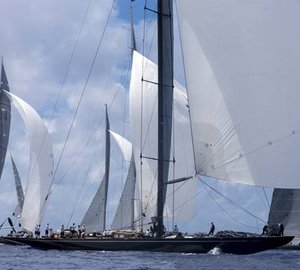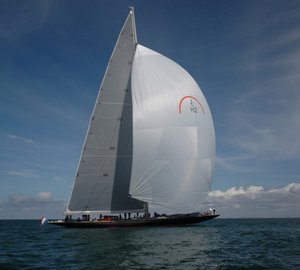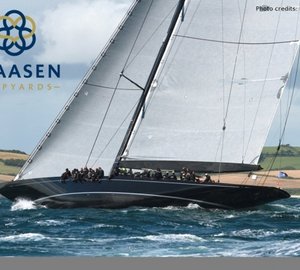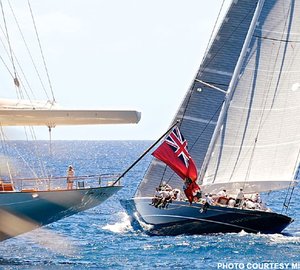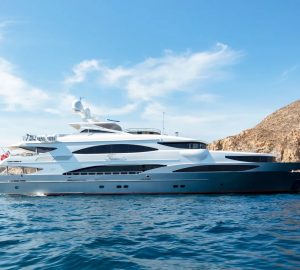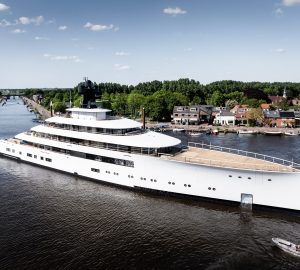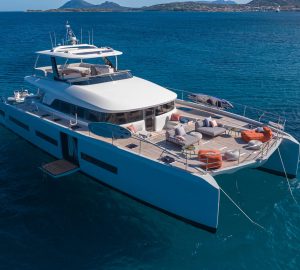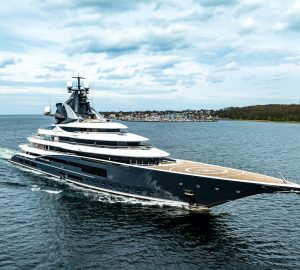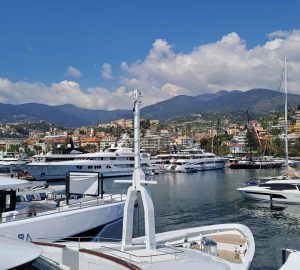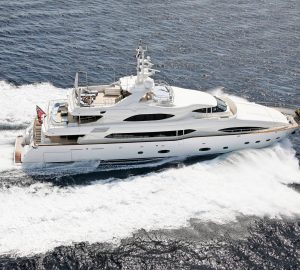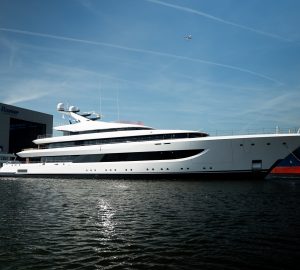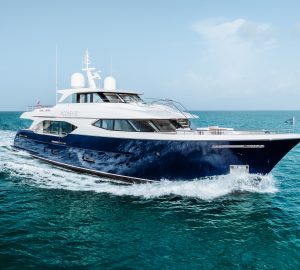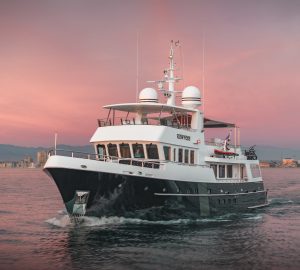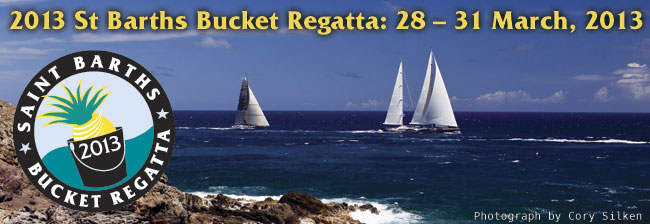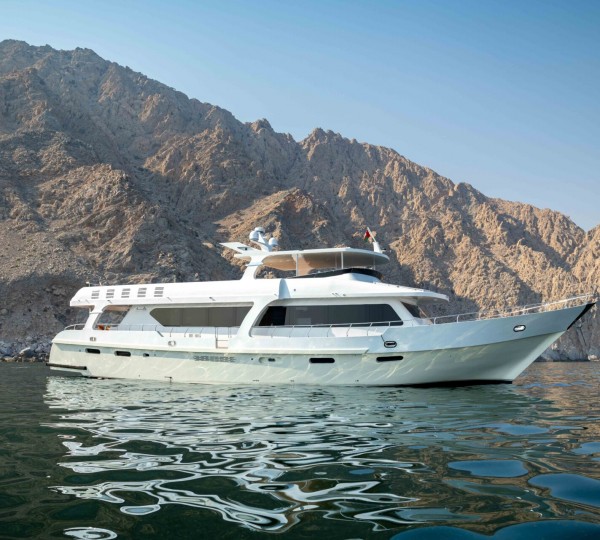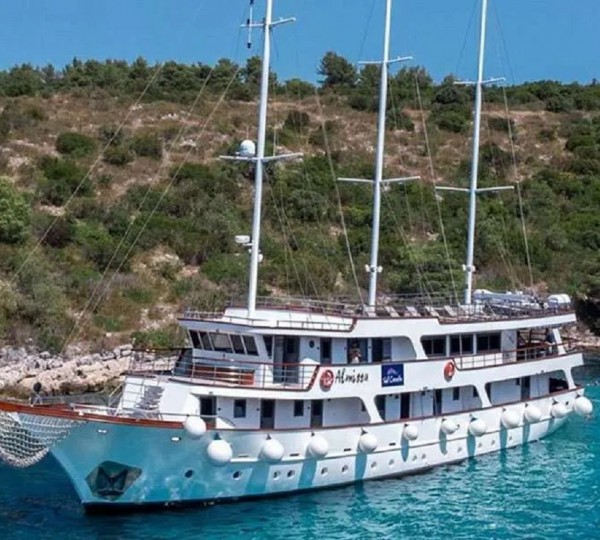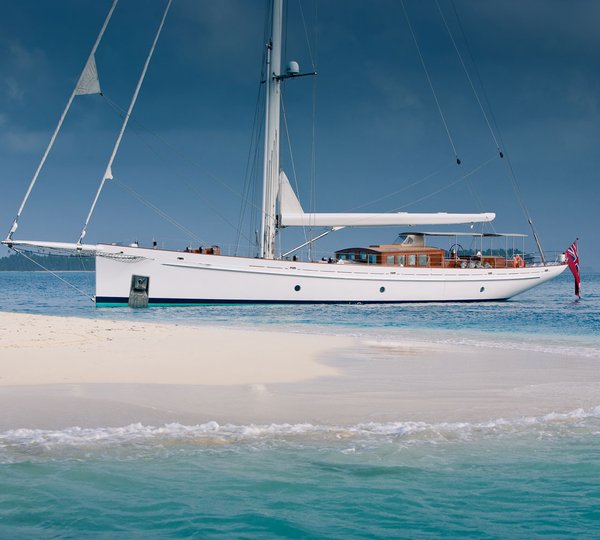There are always lessons learned at any superyacht regatta. The effort of the St Barths Bucket organizers is to make this popular Caribbean regatta a better experience for the yacht owners as well as participants each and every year. Set to run from March 28 to 31, this year’s event will be once again hosting the latest in Superyacht designs, along with the true classics. Currently 39 yachts have confirmed their participation.
With St Barths averaging 40 yachts over the past five years, it has created challenges both on the water and ashore. This year’s event will again showcase some of the most impressive superyachts in the world and a fleet size that is once again nearly double that of any other superyacht regatta on the racing calendar.
Much was learned with last year’s record fleet and the Event Director produced a detailed post-event assessment for the Directors and sponsors. The report highlighted areas of concern and provided recommendations that addressed these. The organizers expect that these will ultimately make the Bucket experience even more enjoyable for yacht owners, their guests and crews.
While there were no collisions last year, there were too many close calls – even with the moderate conditions experienced on all three race days. Certainly an argument could be made that congestion on the racecourse led to safety issues and that the amount of passing that some yachts had to do impacted fair sailing and the rating rule authority’s task of handicapping yachts fairly.
FAIR RATINGS – THE INTERNATIONAL SUERYACHT RULE
Over the past nine years the Bucket Rating Rule, now the International Super Yacht Rule (ISYR), has achieved a remarkable level of success at leveling the playing field for fair handicapping of the most divergent yacht designs. Recent finishes at the Bucket have been dramatic with upwards of forty yachts that describe every tangent of superyacht design. Results these past few years have been determined by the thinnest of margins. It has not been uncommon to see as many as 10 yachts finishing within a mere 2 minutes. The organizers will be providing more information on the ISYR later this month.
At the end of the day we’ve become the victim of the handicapper’s success. As the ratings and good sailing create close and exciting finishes, all too frequently it’s getting to be dangerously crowded on the finish line with the large Bucket fleets. In short – too exciting!
CLASS PURSUIT RACING
This year in St. Barths, the Bucket Regatta will use the same popular pursuit racing format with a focus on class racing. The organizers will use the same controls they’ve used to bring the finishes together, to separate them. The organizers do not want to lose any of the excitement of their traditional pursuit racing format, therefore, we will structure the racing to have each class finish together (as opposed to the entire fleet). As such, they will have up to a dozen yachts approaching the finish at a time…. instead of forty! This will be an important step forward with regard to enhancing safe racing.
In function this will be simple. All yachts will share the same start and finish line and will sail the assigned course for their specific class. The rating authority and race committee will structure the starting times, such that the three classes will finish at different times – the gap between class finishes will likely be approximately 10 minutes. The organizers are running test scenarios this month to evaluate starting sequence lengths with different courses for classes, and other relevant factors. Within each of the three pursuit classes the racing will be as exciting as ever, featuring the routine close finishes, but there will be less congestion at the last few turning marks and the finish line.
The organizers of St Barths Bucket are excited about this new development, and look forward to far less “hair raising” finishes while maintaining the exciting pursuit racing concept of first boat in class home wins.
OVERALL BUCKET WINNER
As in the past, we will celebrate an overall Bucket winner at the conclusion of the regatta. That yacht will be one of the three pursuit class winners determined by a multifaceted criteria that will include their ‘fleet result’, how competitive the racing was in their class, good sportsmanship on the racecourse, and competing in the traditional ‘Spirit of the Bucket’. Additional details on the Overall Winner criteria will be available early next month.
CLASS BREAKS
The three pursuit classes for the 2013 Bucket Regatta will be Les Gazelles des Mers, Les Mademoiselles des Mers and Les Grandes Dames des Mers. Proper class breaks are very important to the issue of fair racing. Ideally, yachts in the same class have somewhat similar sailing characteristics. It is not always in the best interest of fair racing to have breaks based simply on speed. Other important factors include displacement length ratio and sail area / displacement (upwind and down), to name just a few. This year the Bucket Regattas has formed a committee to determine class breaks. The make up of this committee, more on our philosophy and the 2013 preliminary class breaks will be posted on the Bucket web site and e-mailed to boat captains early next month.
J MANIA
In another development for 2013, the Bucket regatta has a staggering five J class entries. This will be the first gathering of five or more J’s since 1937! The J Class Association has requested their own class start, which actually works nicely with our intent to break out a ‘racing oriented’ performance class to enhance both safe and fair racing for the entire fleet (based on lessons learned in 2012).
The J Class will start and finish first, race on a similar course as the Gazelles, have a conventional fleet start, and race under standard ISAF Racing Rules of Sailing. In determining racecourses each day, the race committee will make best efforts to maintain separation between the racing class and pursuit classes. There will be written contingencies provided in the unlikely event the J’s encounter any pursuit yachts on the racecourse. This 2013 change provides yet another layer of safety to the St Barths Bucket Regatta.
SUMMARY
As one can see, the organizers of St Barths Bucket are taking meaningful steps this year to enhance fair racing and safe sailing. They are confident that the changes being enacted will make the racing far safer, resolve a growing ‘race boat problem’, provide for better class racing and enable the rating rule authority to be more successful with the handicapping.
The organizers have listened closely to the yacht owners, sailors and their race management team to make adjustments that deal with the realities of a 40-yacht superyacht fleet.

